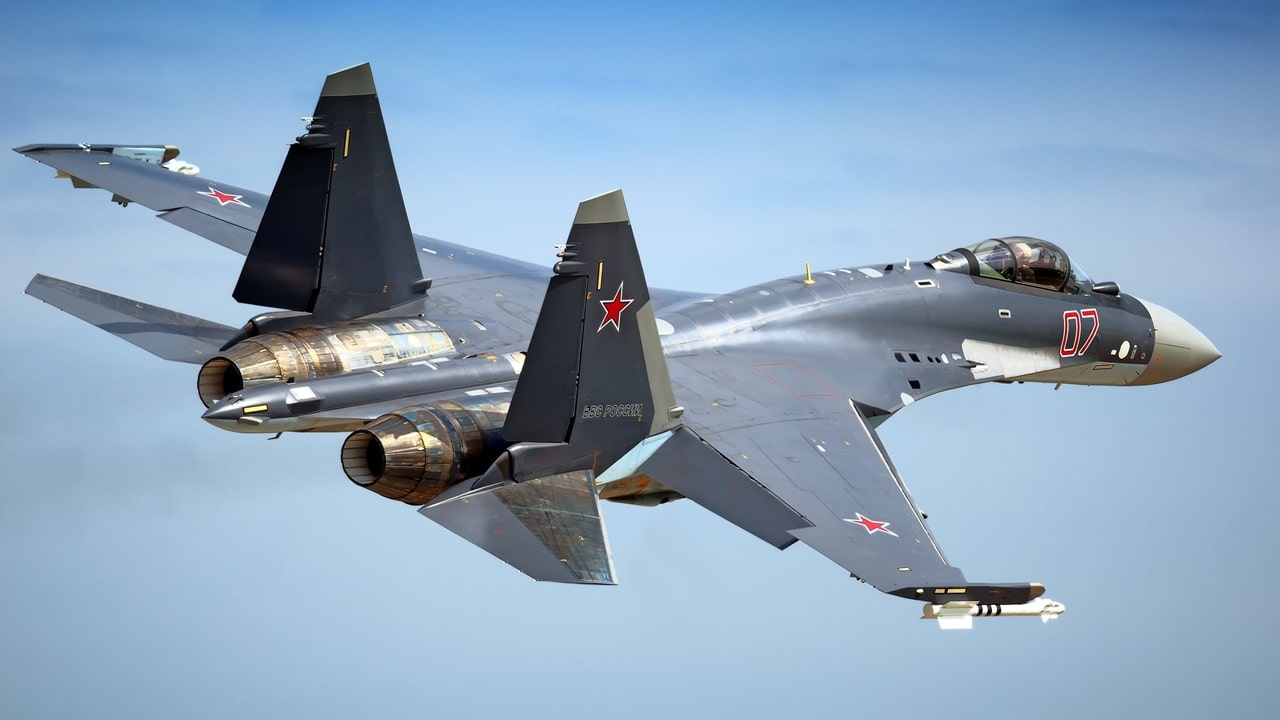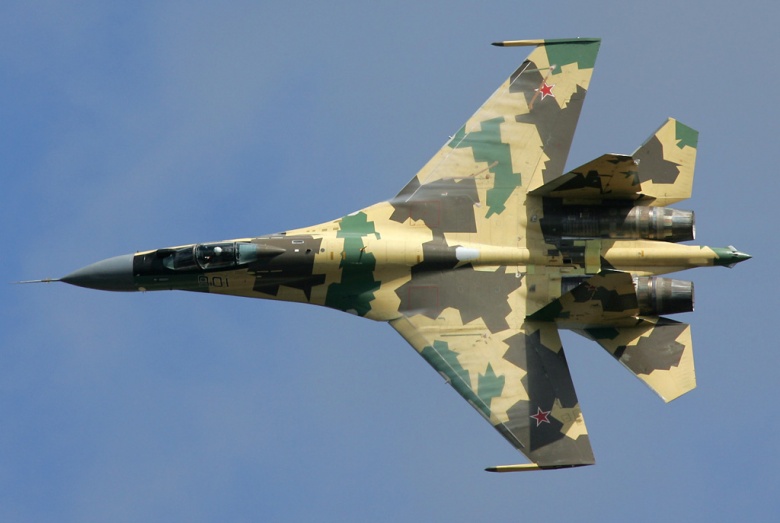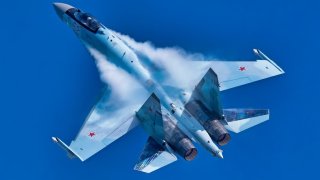Su-35: The 'Lethal' Russian Fighter That No One Wants to Buy
Designated by the North Atlantic Treaty Organization as “Flanker-E” the Soviet-derived Su-35 fighter jet became the definitive production variant of the Su-27 in the early 1980’s.
Meet the Su-35: Since the Ukraine war began, Russia’s arsenal of weapons and military systems has shrunk considerably. From main battle tanks and airframes to munitions and drones, Moscow is struggling to sustain its front lines with adequate equipment. Ukrainian forces, equipped with a litany of both domestic and foreign-delivered weapons, have successfully wiped out at least half of Russia’s tank fleet alone since February 2022.
While Kyiv has clearly managed to thwart Moscow’s full-scale advances with these countermeasures, its troops have gotten some help from an unlikely source. Russian fighters in Ukraine reportedly shot down their own frontline fighter jet last month for the second time in roughly a week.
According to Russian sources, the Su-35 fighter was shot down by the country’s own air defenses. An earlier incident that resulted in the downing of another jet occurred in late September near the southern Zaporizhzhia region.
The Dutch open-source intelligence tracker Oryx recently confirmed that Moscow has lost at least four Su-35 jets since the invasion commenced, not including the jets that were likely shot down this fall.
The British Defense Ministry released an intelligence update on X, formerlly Twitter, following last month’s incident, asserting that it had 80 percent to 90 percent confidence that the fighter was destroyed in the self-perpetuated attack. "On 28 September 2023, Russian air defense forces highly likely shot down one of their own Su-35S FLANKER M multi-role combat jets over Tokmak, approximately 20km behind the current front line. Although Russia has lost around 90 fixed-wing aircraft since the start of the invasion, this is probably only the fifth loss of a Su-35S, Russia's most advanced combat jet in widespread service," the update said.
Introducing the Sukhoi Su-35 Fighter
Designated by the North Atlantic Treaty Organization as “Flanker-E” the Soviet-derived Su-35 fighter jet became the definitive production variant of the Su-27 in the early 1980’s.
When the Su-27 was being introduced into service with the USSR, engineers with the Sukhoi Design Bureau were tasked to start developing a future fighter with even greater capabilities. The Cold War was heating up around this time and the Soviet desired a formidable counter to America’s own fleet of airframes, including the F-15 Eagle fighter. The Su-27’s successor was designed to be the solution.
The Su-27’s Successor Sports Numerous Enhancements
Since the Flanker-E is largely based on the Su-27, the two platforms share some basic characteristics. Both airframes possess a blended wing-body design, however, the Su-35’s additional canards differentiates it from its predecessor.
The incorporated canards were first introduced to the fighter in the mid-80’s and enable the fighter to sustain 10-g maneuvers. The Su-35 is powered by two Sturn/UFA AL-31F 117S turbofan engines, that allow the fighter to fly at speeds reaching roughly 2,390 km/h (Mach 2.25). This speed is actually equivalent to the F-22 Raptor and even greater than the F-35 Lightening II’s abilities. Additionally, the Flanker-E has a flight range of over 2,000 miles and a service ceiling of nearly 60,000 feet.
While the Su-35 is primarily an air-superiority fighter, the platform has a secondary air-to-ground capability. The Flanker-E can carry an impressive number of weapons. With 12 hardpoints designed to carry external weapons and stores, the fighter can pack both air-to-air missiles and air-to-surface missiles.

As detailed by Airforce Technology, “The aircraft’s air-to-air missiles can include the Vympel R-27 (Nato designation AA-10 Alamo), the Vympel radar-guided medium-range R-77 (AA-12 Adder) and the Vympel short-range infrared-guided R-73E (AA-11 Archer). The aircraft’s air-to-surface missiles include the Molniya Kh-29 (AS-14 Kedge) tactical missiles, the Kh-31P (AS-17 Krypton) anti-radiation missiles and the long-range Kh-58UShE (AS-11 Kilter) anti-radiation missiles. The Su-35 anti-ship missiles include Kh-31A, the long-range Kh-59MK (AS-18 Kazoo), the long-range Kalibr and the NPO Mashinostroenia heavy long-range Yakhont missile.”
Has the Kremlin Exaggerated the Flanker-E’s Capabilities?
The Su-35’s capabilities may sound impressive on paper. However, the fighter has not exactly lived up to expectations in reality.

Only two operators of this airframe exist today – Russia’s Aerospace Forces and China’s People’s Liberation Army Air Force. The Kremlin has notably marketed the Su-35 throughout the Middle East, but has only yielded little bites of interest from the UAE so far. Due to The Counter America’s Adversaries Through Sanctions Act, potential foreign suitors have refused to purchase Russia’s “fourth-generation plus” fighter.

Since Russia’s invasion of Ukraine commenced in February 2022, reports indicate that roughly one fifth of Moscow’s known manned aircraft and helicopter losses can be attributed to self-inflicted incidents.

According to data compiled by Newsweek, Russian system malfunctions, pilot errors and friendly fires are the leading caused behind these losses. Ukraine is expected to begin flying the F-16 Fighting Falcon in the near future, since the White House has green-lit Ukrainian pilots to fly these fourth-generation airframes. While the F-16 is largely considered to be more capable in many aspects when compared to the Flanker-E, it is still vulnerable to Russia’s air defenses.
Author Biography
Maya Carlin is an analyst with the Center for Security Policy and a former Anna Sobol Levy Fellow at IDC Herzliya in Israel. She has by-lines in many publications, including The National Interest, Jerusalem Post, and Times of Israel. You can follow her on Twitter: @MayaCarlin.
All images are Shutterstock or Creative Commons.


